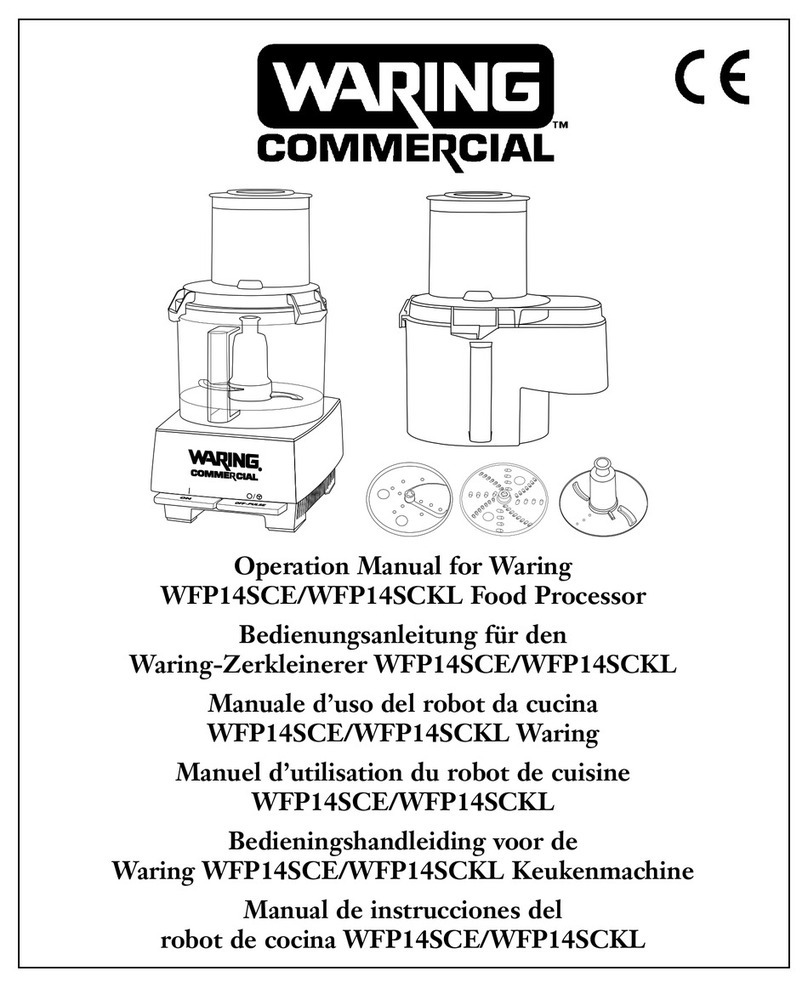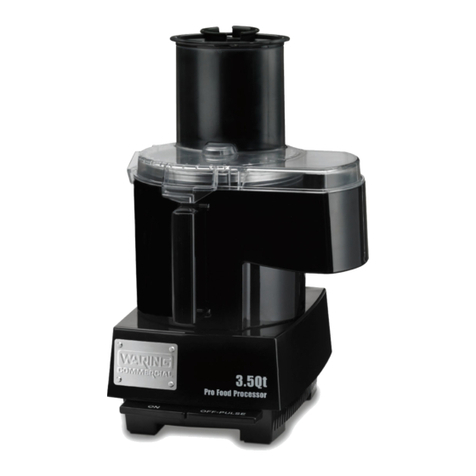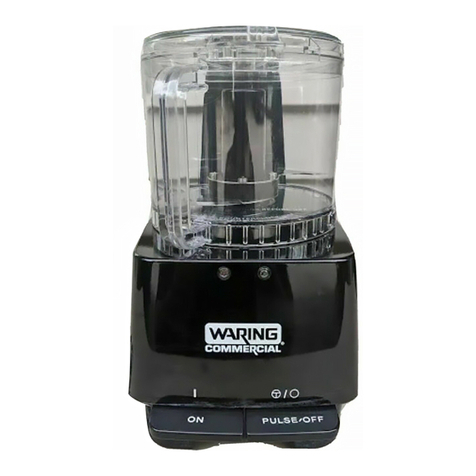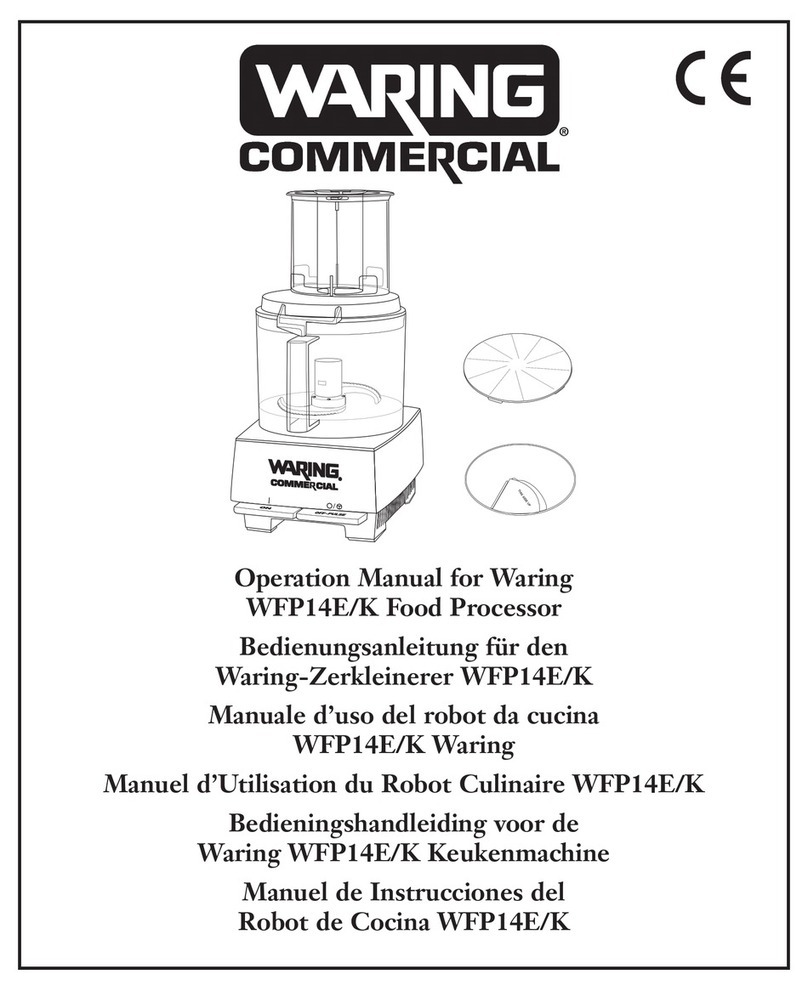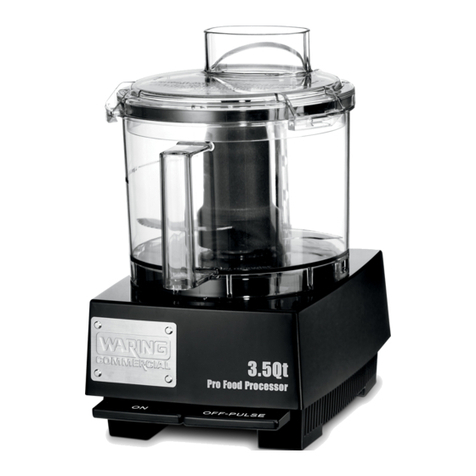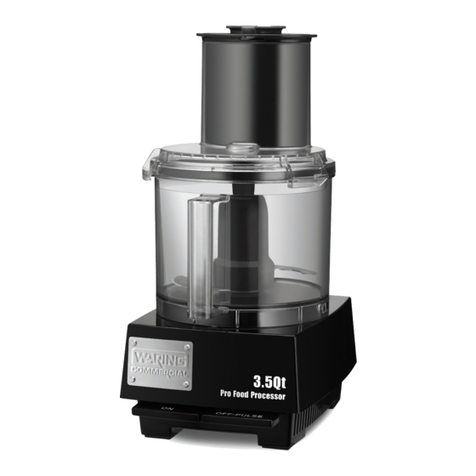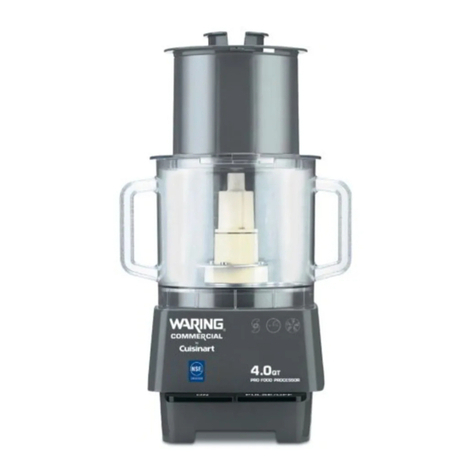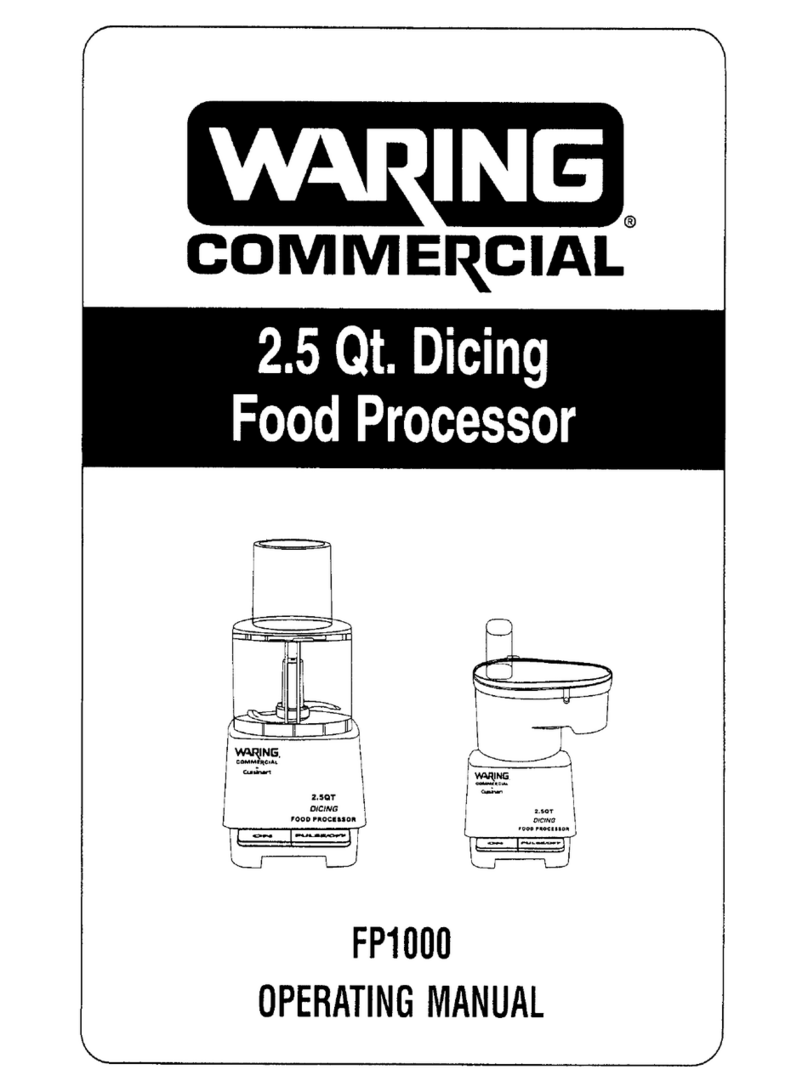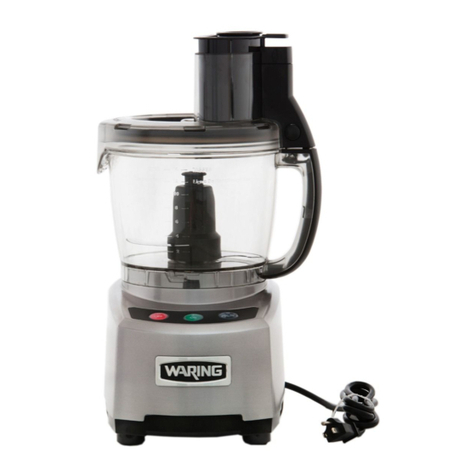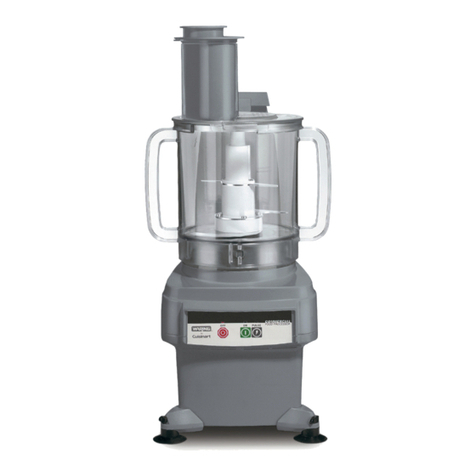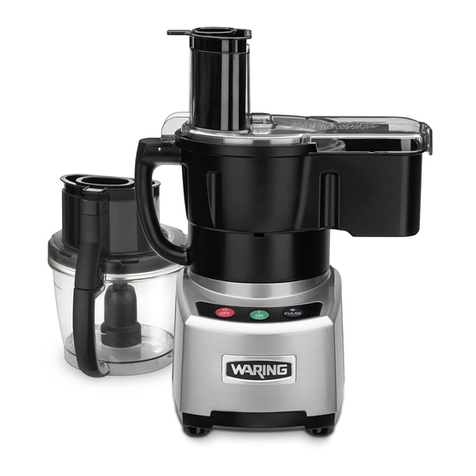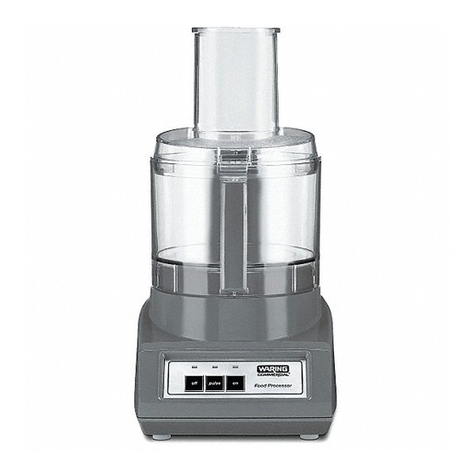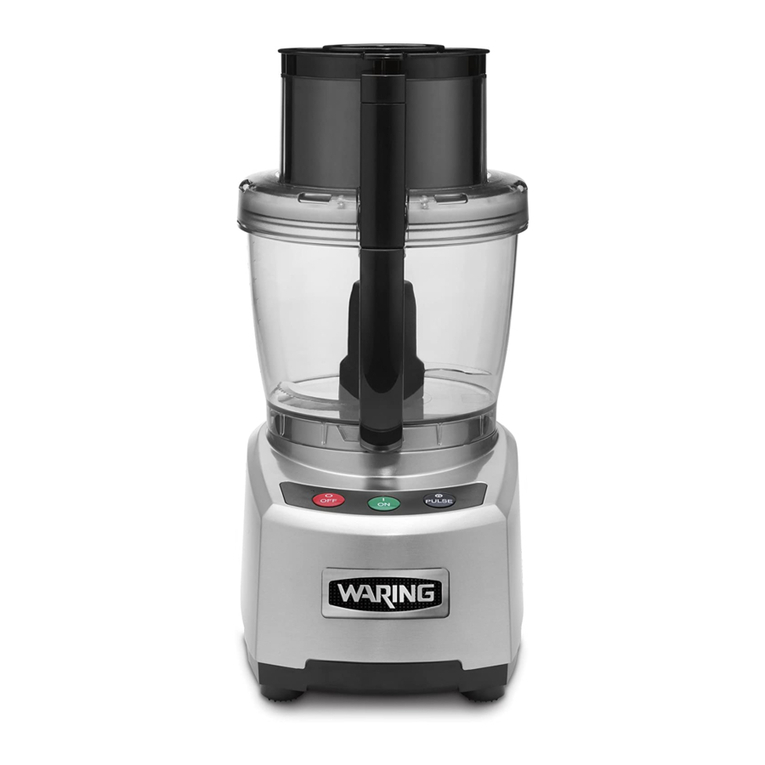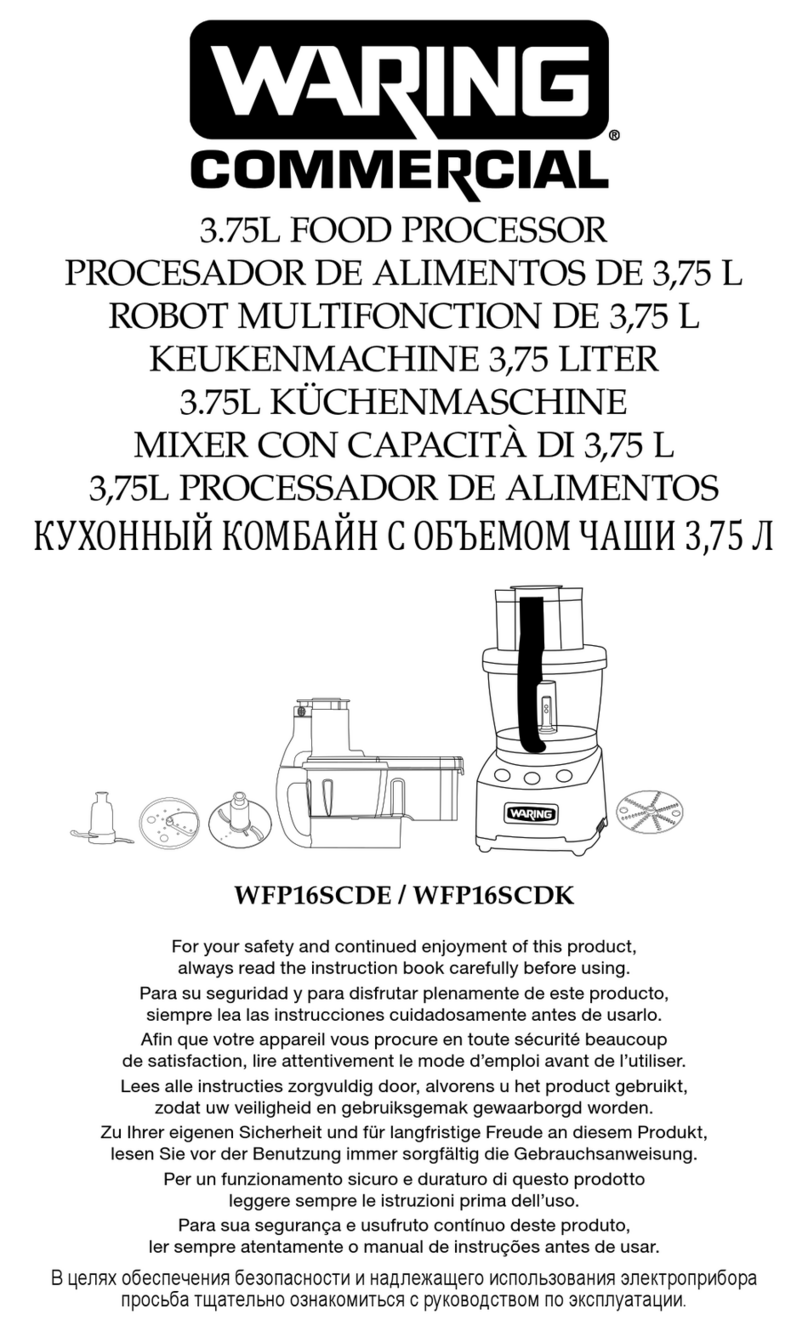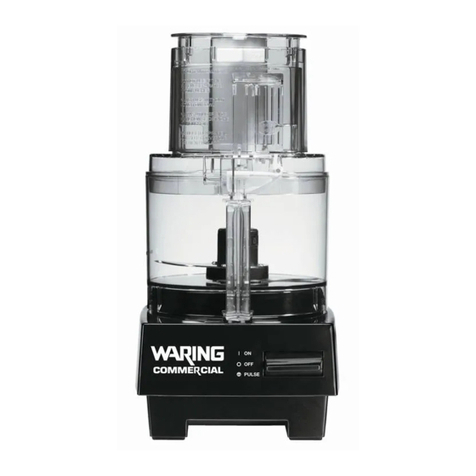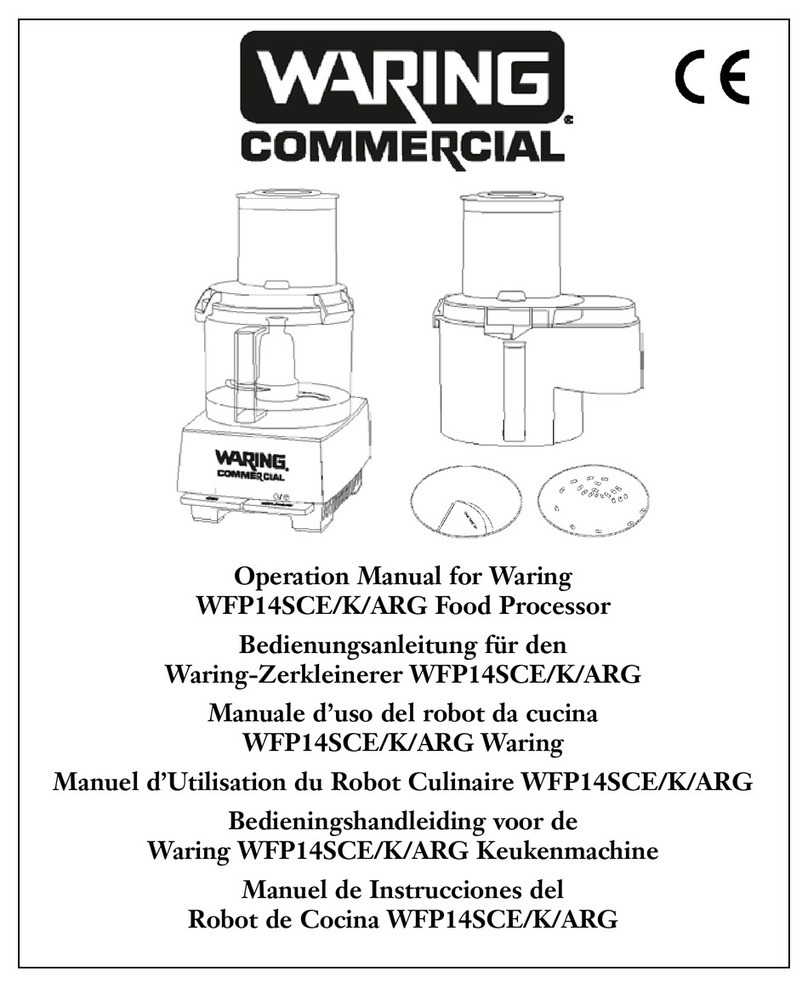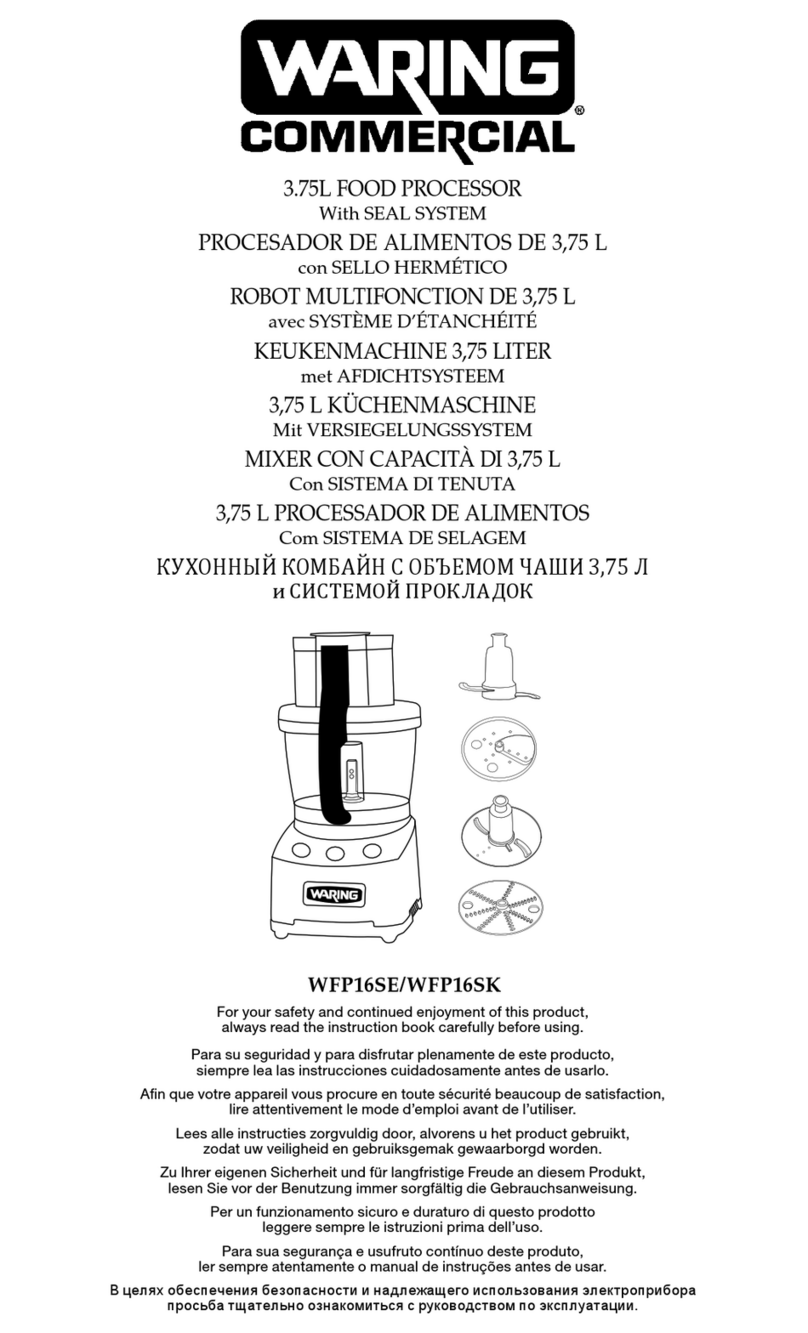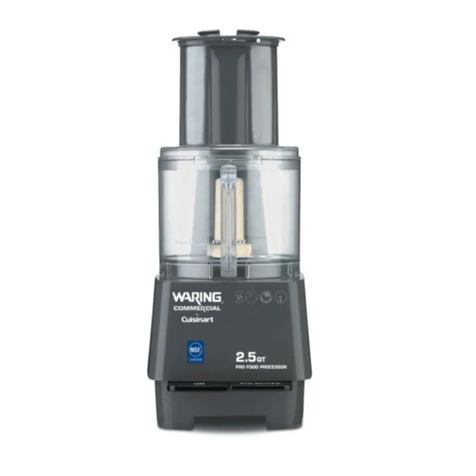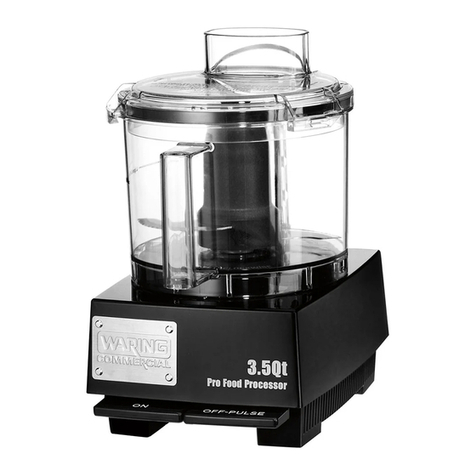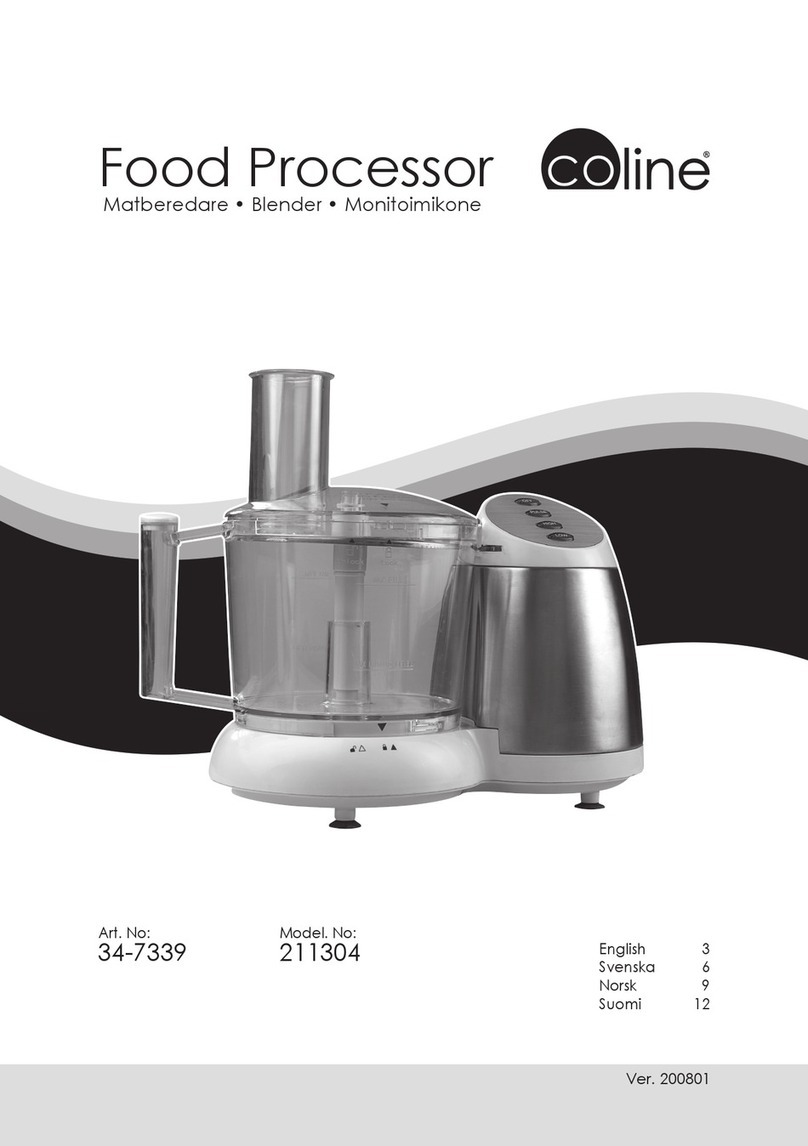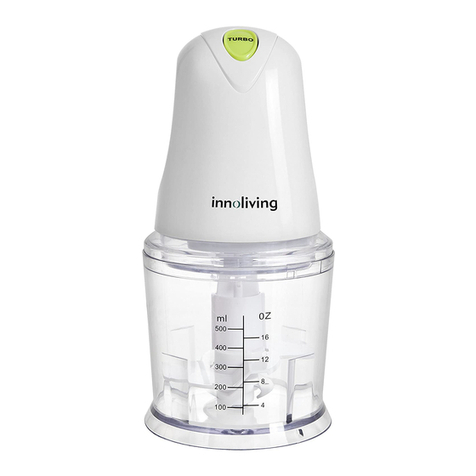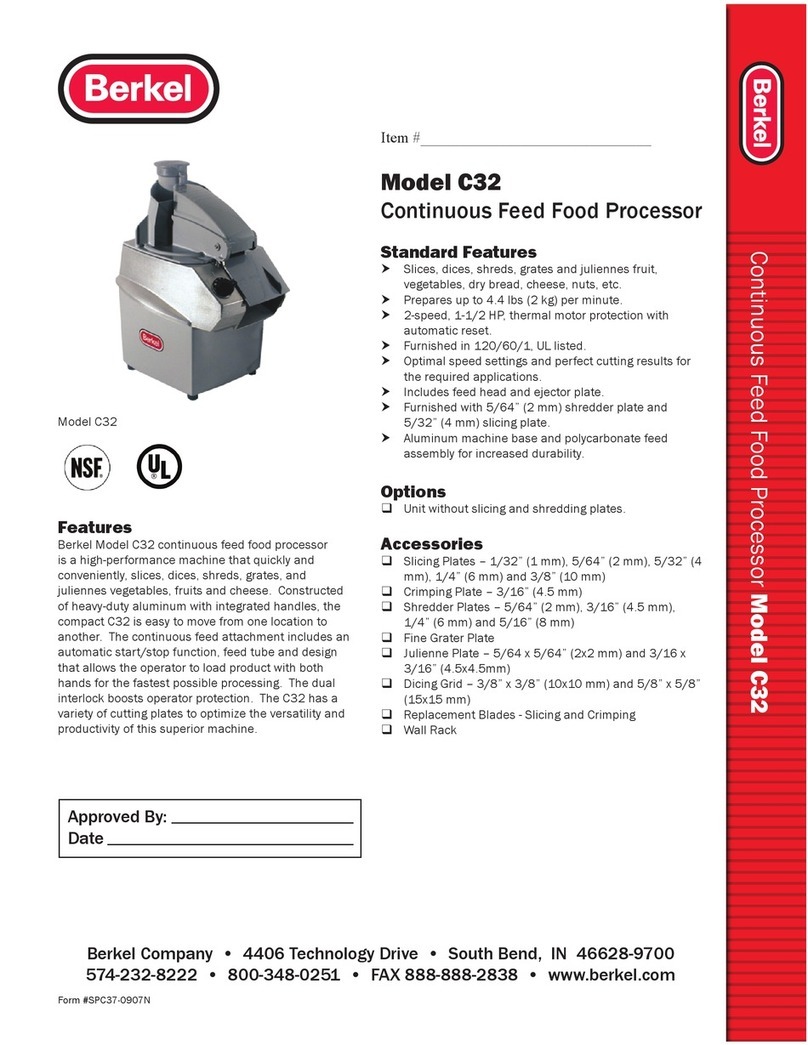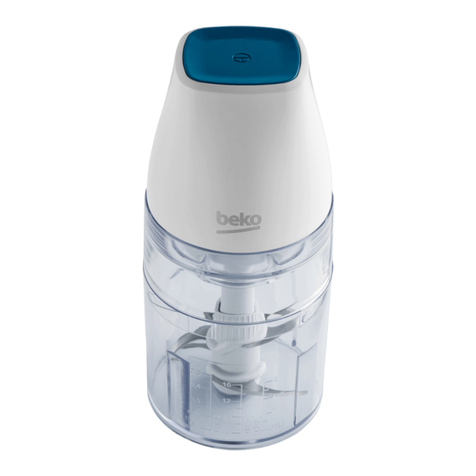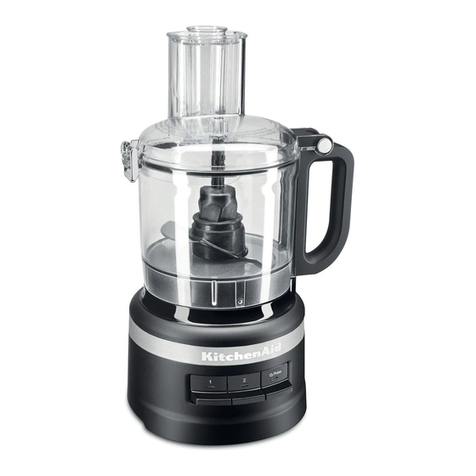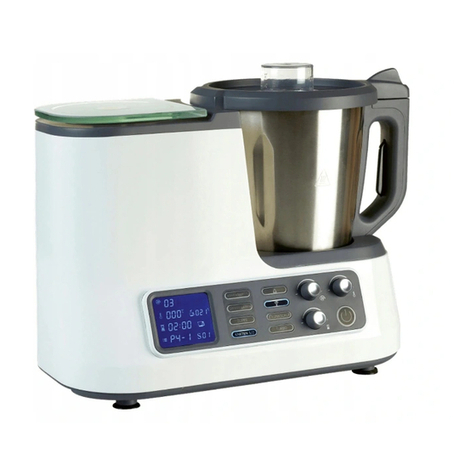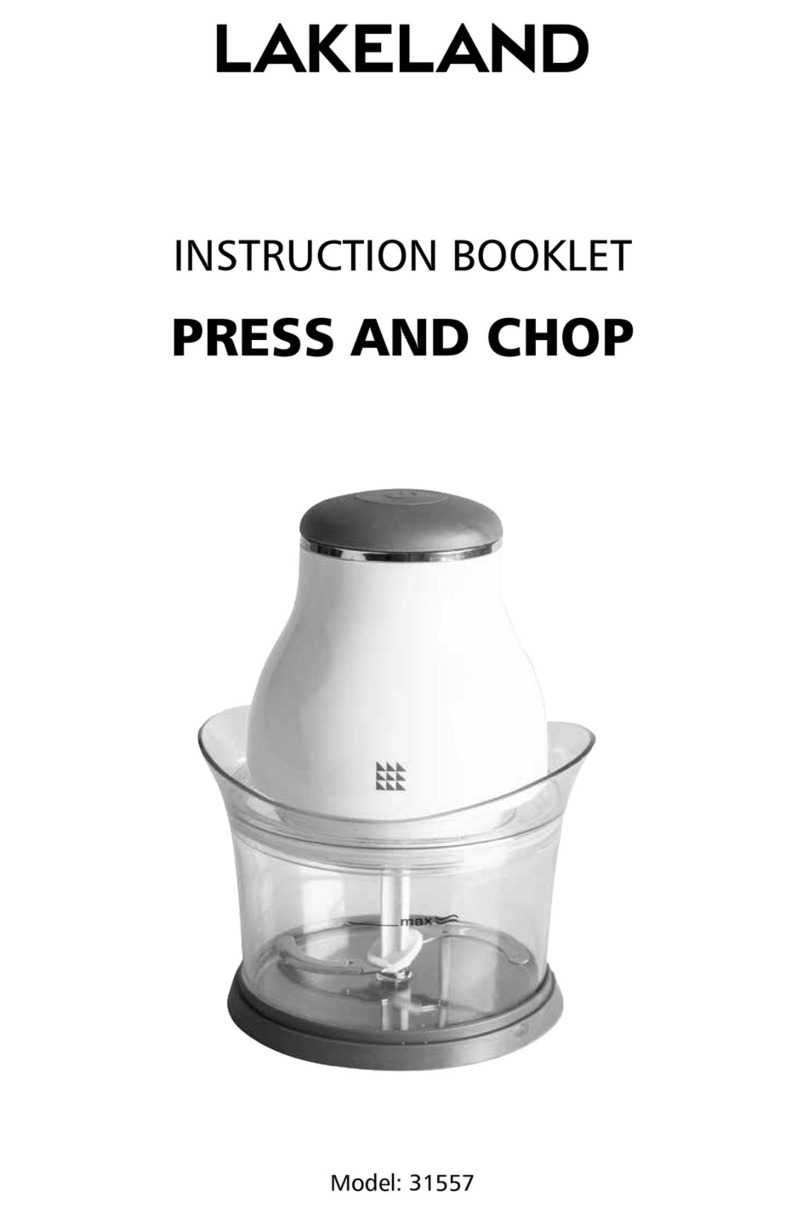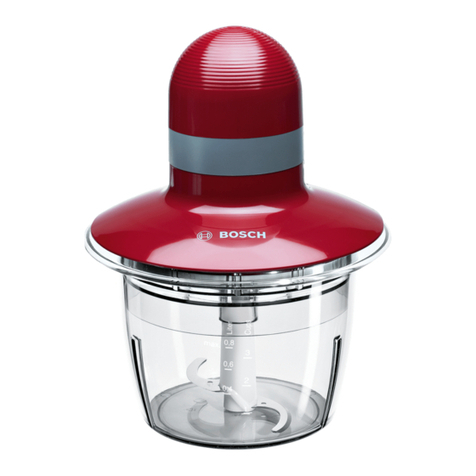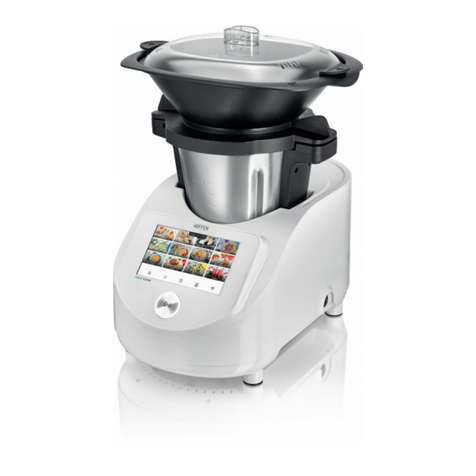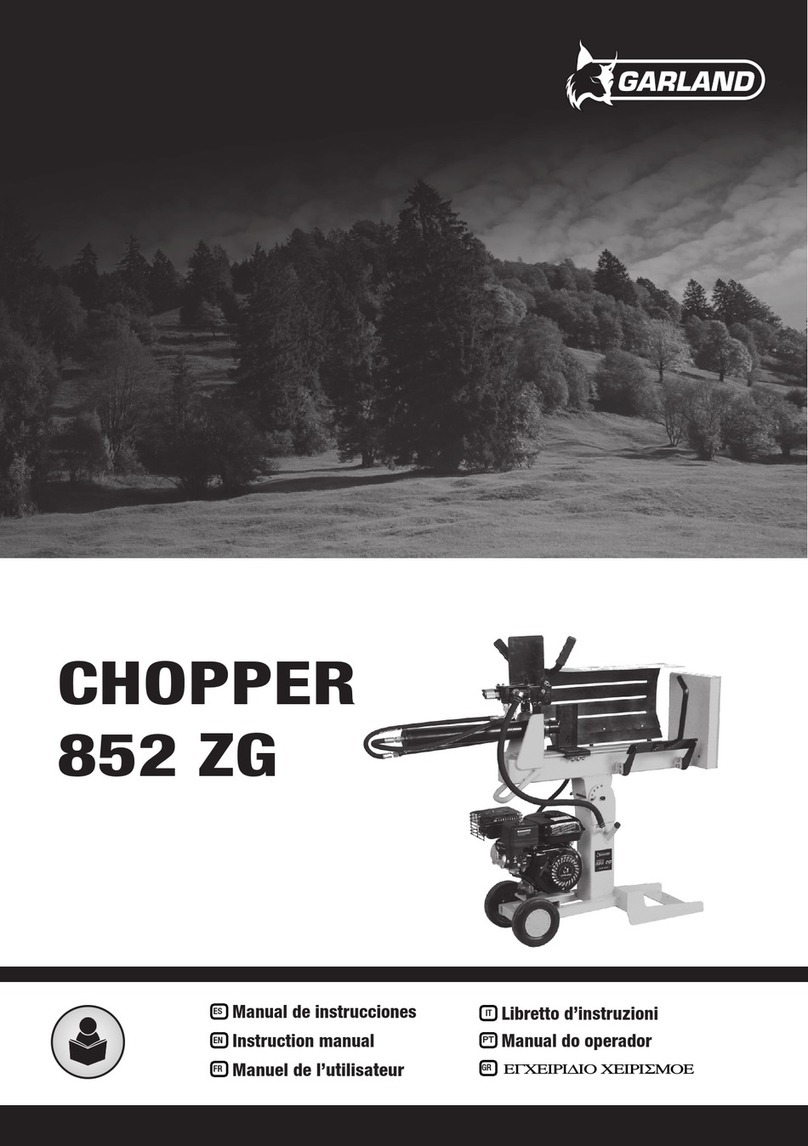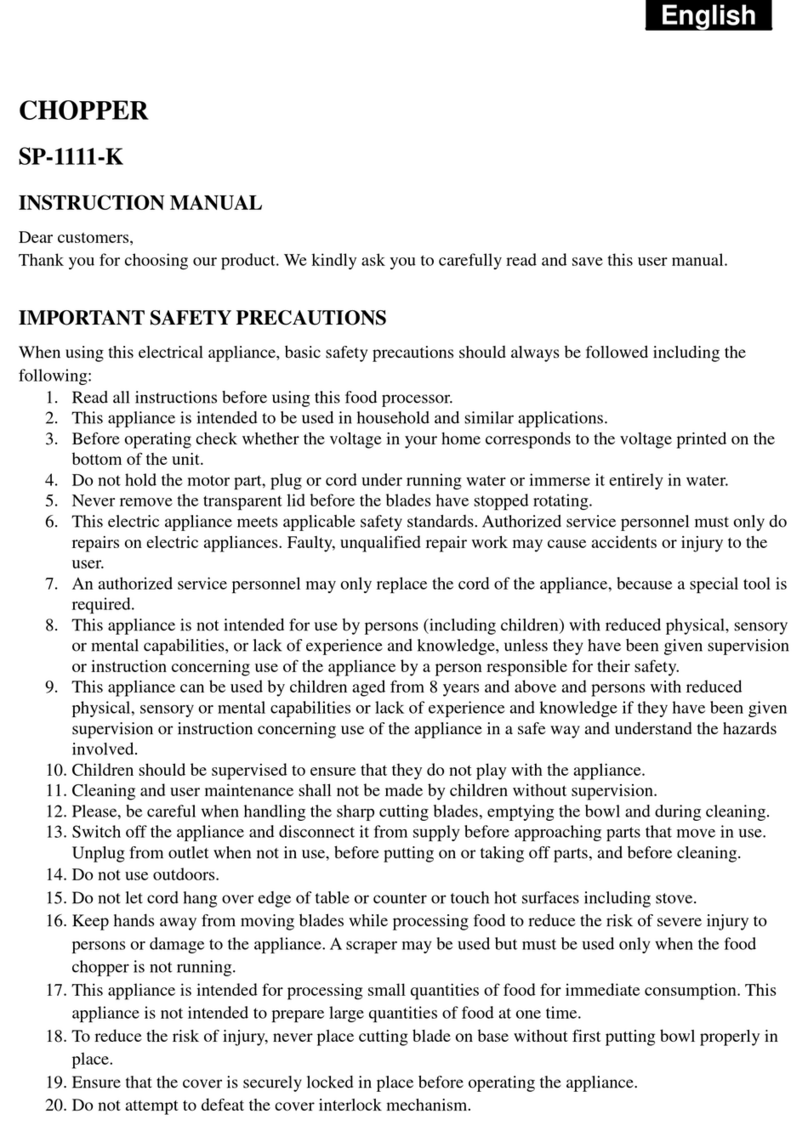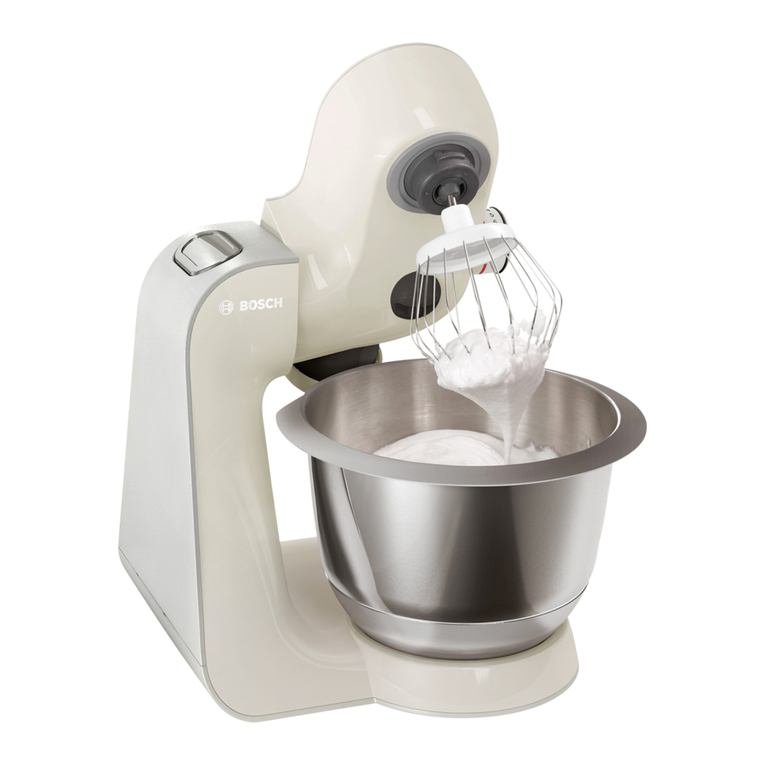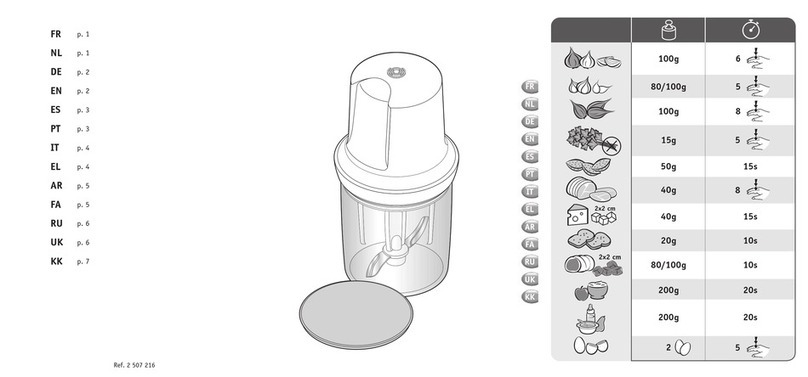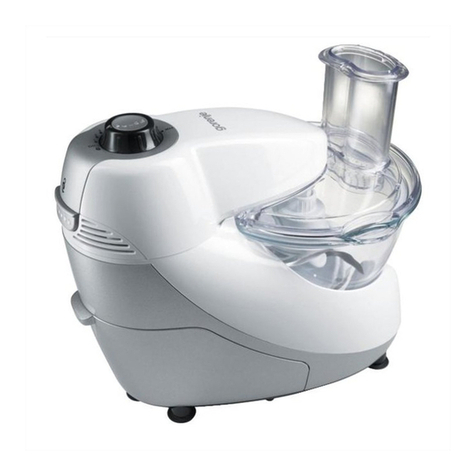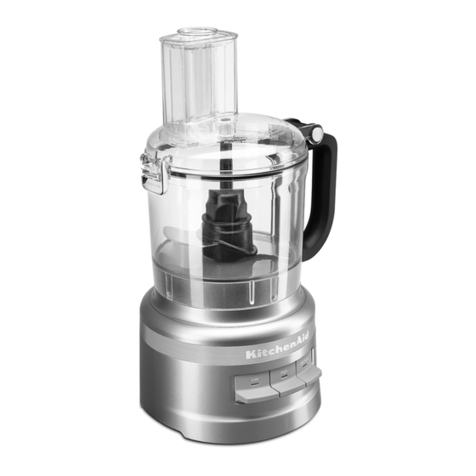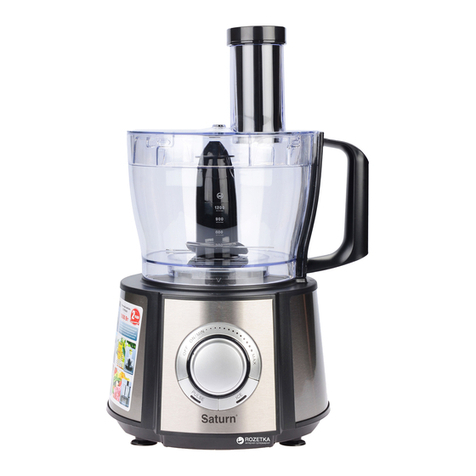16 17
SLICING OPERATION
• The WFP16SCD comes with an adjustable slicing disc. The
adjustable slicing disc allows you to slice foods anywhere
from 1 to 6mm thick using 16 different slicing positions!
Prior to mounting the disc onto the motor shaft (see page
9 for assembly instructions), use the knob to select desired
thickness. Once you have selected the thickness and mounted
the disc onto the unit, you may secure the cover onto the batch
bowl or continuous fed chute and remove the pusher.
• Prepare all food items to be processed by washing and peeling
as required. Remove pits, stones, and large seeds. Be sure the
food will t into the proper feed chute. Foods such as carrots,
cucumbers, etc., should be cut at at both ends to provide a
consistent slice throughout the whole product.
• With foods like cabbage, lettuce or any product that has an
undesirable core, the core should be removed. Medium size
cabbage or lettuce heads may be cut into thirds to t in the
feed chute. Larger heads may need to be quartered.
• When food preparation is complete, ll the chosen feed tube,
position the pusher, turn the machine on and monitor the
results.
• Never try to slice soft cheese. Use only hard cheese.
Mozzarella may be sliced only when well chilled around 36˚F.
• When sliced food reaches nearly full capacity of the bowl,
remove all sliced food from the bowl.
SHREDDING OPERATION
• The WFP16SCD comes with a reversible shredding disc. Both
sides on this disc produce a perfect shred, one ne, the other
medium. When assembling the shredding disc, note that the
side facing up will be the size shred produced. When the disc
is secured, you may attach the cover on the batch bowl or
continuous feed chute and remove the pusher.
• Prepare all food items to be processed by washing and peeling
as required. Remove pits, stones, and large seeds. Be sure the
food will t into the proper feed chute.
• Select which feed tube to use. Horizontal placement of foods
such as carrots and zucchini will result in a longer shredded
3 or 4 times at a rate of 1 second on, 1 second off. If the food is
not chopped ne enough, let the processor run continuously for
a few seconds. If the machine has trouble starting, reduce the
amount of meat in the bowl and start again.
Chopping/grating hard cheese
To chop, place up to 2 lb. of uniformly cut 1-inch (2.5 cm) cubes
of chilled cheese into the bowl and pulse. For grated cheese,
pulse until the cheese is in small chunks (pea size), then allow
the processor to run continuously until you have the degree of
grating desired. Cheese with high moisture content can ball up if
processed too long.
Chopping onions, celery, cabbage, etc.
Cut onions in quarters, and other vegetables into 1-inch
(2.5 cm) cubes. Place the cubed food into the work bowl up to the
top of the bowl’s inner tube, and pulse until you reach the desired
consistency.
Note: If you let the blade run too long, the ingredients on the
bottom will become puréed or give you uneven results.
Purée or Mix
To purée tomatoes, vegetables and fruits, make sauces, or mix
and blend ingredients, place the ingredients into the bowl, turn
the unit on and allow it to run continuously until you reach the
desired consistency. Do not let the machine run unattended.
If too much liquid is used, it will overow. In this case, stop
operation, remove liquid to below the MAX FILL LINE and
continue processing.
Do not fill liquid past MAX LIQUID FILL LINE.
ACCESSORY DISC SELECTION AND USE
The food processor disc accessories are made to perform a wide
variety of food processing tasks: slicing, whipping, shredding and
dicing. Four (4) accessory discs are included with the WFP16SCD.
As of this printing they are:
WFP16S10 - Adjustable Slicing Disc
WFP16S11 - Sealed Whipping Disc
WFP16S12 - Reversible Shredding Disc
WFP16S13 - Dicing Assembly
